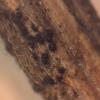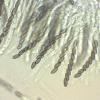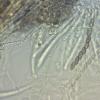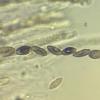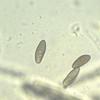
15-12-2025 15:48
 Danny Newman
Danny Newman
Melanospora cf. lagenaria on old, rotting, fallen

15-12-2025 15:54
 Johan Boonefaes
Johan Boonefaes
Unknown anamorph found on the ground in coastal sa

15-12-2025 21:11
 Hardware Tony
Hardware Tony
Small clavate hairs, negative croziers and IKI bb

15-12-2025 07:09
 Danny Newman
Danny Newman
indet. Rutstroemiaceae sp. on unk. fallen leavesMc

15-12-2025 07:05
 Danny Newman
Danny Newman
Pseudosclerococcum golindoi (det: Zotto)near Cosb

15-12-2025 11:49
 Danny Newman
Danny Newman
ITS sequences from the following two collections B

15-12-2025 12:34
 Danny Newman
Danny Newman
indet. Rhytismataceae on oak leafnear Purchase Roa

09-12-2025 12:06
 Andgelo Mombert
Andgelo Mombert
Bonjour,Je recherche l'article concernant Hypobryo
Using the limited literature I have available, I think it's an Anthostomella species.
The perithecia are ca 0.1-0.2 mm across . Asci are cylindrical, 65-80 x 5-6 µm. Tips stain blue in Melzer's. Spores are uniseriate in the ascus, brown, 8-10 x 3-4 µm. I can't see any sign of an appendage on the spores.
If anyone has any suggestions, I would be very grateful.
Merci
Marcus

can you see a (possibly faint) germination slit on the spores? Anthostomella has a tendency to appear on monocot's, though not exclusively. A. limitata is plurivorous, and has spores in this size range, but for the time being I am being cautious . . .
I can send you Sheila Francis' Anthostomella monograph (Mycol. Pap. 139 (1975) ) if you are interested . . .
best wishes
Chris

microscopy fits well Anthostomella but in that genus ascomata are typically imersed under a clypeus. It is not clear to me on your photo whether ascomata are superficial or immersed in the substrate. Otherwise I agree with Chris that A. limitata would be a possible candidate. The signature of this species is a spiralling germ slit to the ascospores, often hard to make out, try a very thin slide in 3% KOH, it may help. Also try to make a vertical section across the fungus to see if it is immersed under a clypeus.
Good luck,
Jacques
Hi Chris
It would be great if you could send me the Anthostomella monograph.
I couldn't see a germ slit on the spores but didn't look very closely.
A. limitata does seem to be a possibility. I considered A. tomicoides and A. clypeoides, which have also been recorded on a range of host species, but the spores aren't right.
Marcus
Thanks for your suggestions. I'll have a closer look.
The perithecia are superficial.
Marcus
I'd be very interested in the Anthostomella monograph as well. Thanks in advance!
Best wishes,
Gernot
I'd be also very interested in the Anthostomella monograph as well. Thanks in advance!
Best wishes,
Francis
